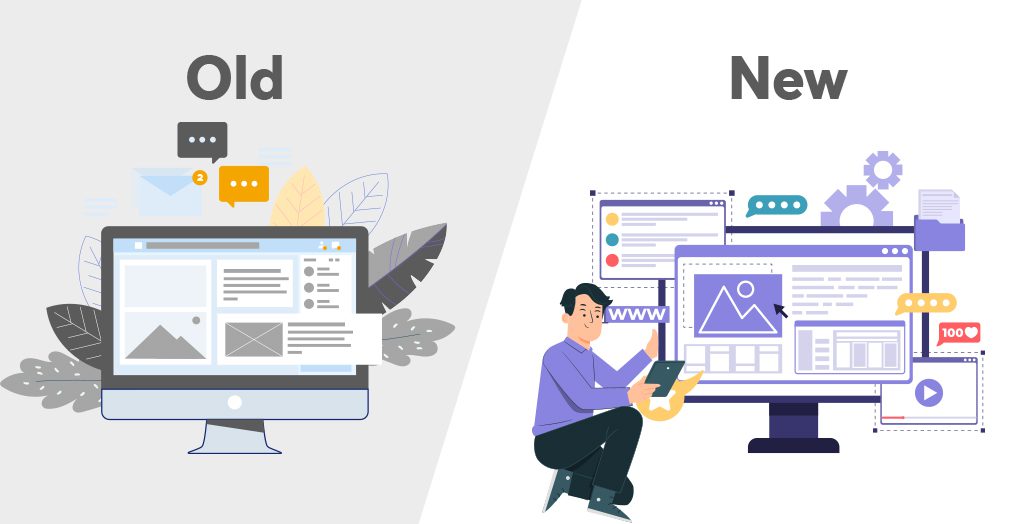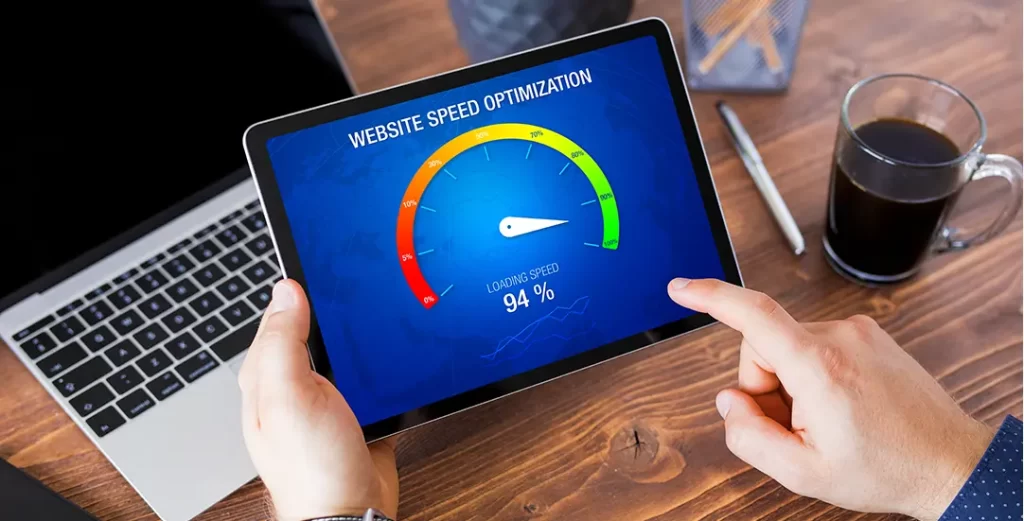In today’s digital age, a company’s website is often the first point of contact between a business and its potential customers. A well-designed website can make a powerful impression, while an outdated or poorly functioning one can turn visitors away.
This is why website redesign is a crucial aspect of maintaining a strong online presence. In this article, we will explore the numerous benefits of website redesign and provide insights on how to do it right.
Benefits of Website Redesigning


1. Enhanced User Experience (UX)
One of the primary benefits of website redesign is the opportunity to improve user experience. User-friendly websites are more likely to engage visitors and encourage them to stay longer, explore more pages, and take desired actions.
A revamped website can address issues such as slow loading times, broken links, and confusing navigation, making it easier for users to find the information they need.
2. Improved Visual Appeal
First impressions matter, and the visual appeal of your website plays a significant role in shaping those impressions. A modern and visually appealing website is more likely to capture the attention of visitors.
Redesigning your website allows you to update its design, incorporate current design trends, and align it with your brand’s aesthetics.
3. Mobile Responsiveness


Benefits of website redesigning include mobile responsiveness. With the increasing use of smartphones and tablets, it’s essential to ensure that your website is responsive and functions well on all devices.
A website redesign provides an opportunity to make your site mobile-friendly, ensuring that it looks and works seamlessly across various screen sizes and resolutions.
This not only improves user experience but also positively impacts your search engine rankings as Google prioritizes mobile-friendly websites.
4. Better SEO Performance
Search engine optimization (SEO) is critical for driving organic traffic to your website. A website redesign can involve optimizing your site’s structure, content, and meta-tags to improve its search engine ranking. You can also focus on creating high-quality, relevant content that appeals to both users and search engines.
5. Enhanced Security


Website security is a top concern in today’s digital landscape. Older websites may be more vulnerable to security threats. By redesigning your website, you can update security protocols, install the latest security patches, and implement encryption measures to protect user data and maintain their trust. This is one of the most sought after benefits of website redesigning.
6. Improved Loading Speed


Slow-loading websites frustrate visitors and can lead to high bounce rates. A website redesign allows you to optimize images, leverage browser caching, and reduce unnecessary code, all of which can significantly improve loading speed. Faster loading times not only improve user experience but also positively impact SEO rankings.
7. Updated Content
Outdated content can harm your website’s credibility and relevance. A redesign gives you the opportunity to review and update your content, ensuring that it remains accurate, informative, and engaging. Fresh and relevant content not only attracts visitors but also keeps them coming back for more.
8. Integration of Modern Features
Next among the benefits of website redesign is integration of modern features. Technology is constantly evolving, and new features and functionalities become available regularly. A website redesign allows you to integrate the latest technologies and features, such as chatbots, social media feeds, e-commerce capabilities, and interactive elements, to enhance user engagement and meet evolving user expectations.
9. Competitive Advantage
Staying ahead of your competitors is essential in today’s competitive digital landscape. A well-executed website redesign can give you a significant edge by offering a superior online experience compared to your competitors. This can lead to increased customer loyalty and market share.
10. Better Analytics and Data Tracking
Tracking user behavior and website performance is vital for making informed decisions. During a website redesign, you can implement advanced analytics tools and tracking systems to gain valuable insights into how visitors interact with your site. This data can help you refine your marketing strategies and improve user experience further.
How to Do Website Redesign Right?
Now that we’ve explored the benefits of website redesign, let’s delve into how to execute it effectively:
1. Set Clear Objectives
Start by defining your goals and objectives for the redesign. Determine what you want to achieve with the new website, whether it’s increasing conversions, improving user engagement, or enhancing branding. Clear objectives will guide the entire redesign process.
2. Analyze Current Performance
Before making changes, assess your current website’s performance. Review analytics data to identify areas that need improvement, such as high bounce rates, low conversion rates, or poor search engine rankings. This analysis will inform your redesign strategy and will help you experience the benefits of website redesign.
3. Understand Your Target Audience
Knowing your target audience is crucial for creating a website that resonates with them. Conduct thorough research to understand your audience’s preferences, pain points, and needs. Tailor your website’s design and content to address these factors.
4. Develop a Comprehensive Plan
Create a detailed plan that outlines the scope of the redesign, including design changes, content updates, and technical enhancements. A well-structured plan will keep the project on track and within budget. This is must important for experiencing benefits of redesigning a website
5. Prioritize User Experience (UX)
User experience should be at the forefront of your redesign efforts. Ensure that your website is easy to navigate, loads quickly, and offers a seamless experience across all devices. Conduct usability testing to gather feedback from real users.
6. Optimize for SEO
Implement SEO best practices throughout the redesign process. This includes optimizing on-page elements, improving site speed, and ensuring mobile responsiveness. Redirect old URLs to new ones to preserve SEO rankings and prevent broken links.
7. Focus on Content
High-quality content is the backbone of any successful website. Update and optimize your content to reflect your current messaging and align with your audience’s interests. Incorporate relevant keywords and provide valuable, engaging information.
8. Choose the Right Design
Select a modern, visually appealing design that aligns with your brand identity. Pay attention to color schemes, typography, and imagery to create a cohesive and inviting look. Ensure that your design is responsive to different screen sizes.
9. Test and Review
Thoroughly test the redesigned website across various browsers and devices to identify and resolve any issues. Seek feedback from team members and select users to ensure the site meets its objectives and performs well. This step is most important for witnessing the benefits of a website redesign as soon as possible.
10 .Plan for Maintenance
Website redesign is not a one-time event. Plan for ongoing maintenance to keep your site updated, secure, and performing optimally. Regularly review analytics data and user feedback to make continuous improvements.
Conclusion
A website redesign is an investment that can yield significant benefits for your business. By improving user experience, enhancing visual appeal, and optimizing for search engines, you can attract and retain more visitors, boost your online presence, and stay ahead of the competition.
To do it right and start seeing benefits of website redesign, set clear objectives, analyze your current performance, and prioritize user experience and SEO. With careful planning and execution, a website redesign can be a powerful tool for achieving your online goals and ensuring long-term success.



